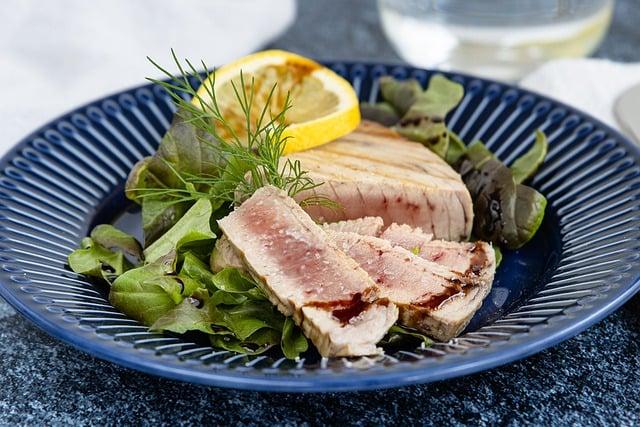Once upon a time in a cozy kitchen, a curious cat named Whiskers watched his owner boil a pot of pasta. The delightful aroma wafted through the air, and Whiskers couldn’t resist. As the noodles danced in the water, he imagined a feast fit for a feline king. When a stray noodle fell to the floor, Whiskers pounced, savoring the soft texture. But as he chewed, he remembered: cats are carnivores! A quick glance at his bowl of tuna reminded him that while pasta was a fun treat, it wasn’t meant for him.
Table of Contents
- Understanding the Nutritional Needs of Cats and the Role of Carbohydrates
- Exploring the Safety of Pasta for Feline Diets
- Preparing Pasta for Your Cat: Tips and Best Practices
- Alternatives to Pasta: Healthier Options for Your Cats Treats
- Q&A
Understanding the Nutritional Needs of Cats and the Role of Carbohydrates
When considering the dietary requirements of our feline friends, it’s essential to recognize that cats are obligate carnivores. This means their bodies are designed to thrive on a diet primarily composed of animal proteins. Unlike humans and some other animals, cats have a limited ability to digest carbohydrates. Their digestive systems are optimized for processing proteins and fats, which play a crucial role in their overall health and energy levels.
While carbohydrates can provide a source of energy, they are not a necessary component of a cat’s diet. In fact, excessive carbohydrate intake can lead to health issues such as obesity and diabetes. Cats derive most of their energy from proteins and fats, which are more efficiently metabolized. Therefore, when considering foods like pasta, it’s important to remember that they should only be offered in moderation, if at all.
Incorporating small amounts of carbohydrates, such as those found in pasta, can be acceptable on occasion, but they should never replace the primary protein sources in a cat’s diet. If you choose to share a bit of pasta with your cat, ensure it is plain, cooked, and free from sauces or seasonings that could be harmful. Always monitor your cat for any adverse reactions, as some felines may have sensitivities to certain ingredients.
Ultimately, the focus should remain on providing a balanced diet rich in high-quality animal proteins. Consider consulting with a veterinarian to determine the best dietary plan for your cat, ensuring that their nutritional needs are met without compromising their health. Remember, while a small taste of pasta might be a fun treat, it should never overshadow the importance of a protein-centric diet tailored to your cat’s unique needs.
Exploring the Safety of Pasta for Feline Diets
When considering the dietary needs of our feline friends, it’s essential to understand what foods are safe and beneficial for them. Pasta, a staple in many human diets, often raises questions about its suitability for cats. While cats are obligate carnivores, meaning their primary nutritional needs are met through meat, the occasional small serving of pasta can be harmless. However, moderation is key, as too much can lead to digestive issues.
One of the main concerns with feeding pasta to cats is its carbohydrate content. Cats have a limited ability to digest carbohydrates, and their bodies are not designed to process large amounts of starch. If you decide to share a bit of pasta with your cat, consider the following:
- Choose plain pasta: Avoid sauces, spices, or ingredients like garlic and onions, which are toxic to cats.
- Serve in small portions: A few small pieces can be a fun treat, but it shouldn’t replace their regular diet.
- Monitor for reactions: Always observe your cat for any signs of discomfort or allergies after introducing new foods.
Additionally, it’s important to remember that while pasta may not be harmful in small amounts, it offers little nutritional value for cats. Unlike protein-rich foods, pasta lacks essential amino acids that are crucial for a cat’s health. Therefore, it should never be a primary component of their diet. Instead, think of it as an occasional snack rather than a dietary staple.
while pasta can be a safe treat for cats when prepared correctly and served in moderation, it should not be a regular part of their meals. Always prioritize high-quality cat food that meets their specific nutritional needs. If you’re ever in doubt about what to feed your feline companion, consulting with a veterinarian is the best course of action to ensure their health and well-being.
Preparing Pasta for Your Cat: Tips and Best Practices
When considering adding pasta to your cat’s diet, it’s essential to prepare it in a way that is both safe and enjoyable for your feline friend. Start by choosing plain, cooked pasta without any sauces, spices, or seasonings. Cats are obligate carnivores, meaning their digestive systems are not designed to handle complex carbohydrates or rich flavors. Therefore, **simple is best**. Opt for small shapes like macaroni or penne, which are easier for your cat to chew and digest.
Before serving, ensure that the pasta is cooked thoroughly but not overcooked. Overcooked pasta can become mushy and difficult for your cat to eat. **Al dente** is the ideal texture, as it retains some firmness. After cooking, allow the pasta to cool completely to avoid any risk of burns. You can even cut the pasta into smaller pieces to make it more manageable for your cat, especially if they are not used to eating solid foods.
Portion control is crucial when introducing pasta into your cat’s diet. A small amount, perhaps a teaspoon or two, is sufficient as an occasional treat. Remember, pasta should never replace your cat’s primary source of nutrition, which should be high-quality cat food. **Moderation is key**; too much pasta can lead to digestive issues or obesity, as cats do not require carbohydrates in their diet.
Lastly, always observe your cat after introducing any new food, including pasta. Watch for any signs of allergies or digestive upset, such as vomiting or diarrhea. If your cat enjoys the pasta and shows no adverse reactions, you can consider it a fun, rare treat. However, if you notice any negative effects, it’s best to discontinue serving pasta and consult your veterinarian for further guidance. **Your cat’s health and well-being should always come first!**
Alternatives to Pasta: Healthier Options for Your Cats Treats
While pasta might be a tempting treat for your feline friend, there are numerous alternatives that can provide both nutrition and enjoyment without the potential drawbacks of carbohydrates. Consider incorporating **protein-rich options** into your cat’s diet. Foods like cooked chicken, turkey, or fish can be excellent choices. These protein sources not only satisfy your cat’s natural hunting instincts but also contribute to their overall health and muscle maintenance.
Another great alternative is **vegetables** that are safe for cats. Options such as steamed carrots, peas, or pumpkin can add variety to their treats. These vegetables are low in calories and high in fiber, which can aid in digestion. Just be sure to introduce any new food gradually to monitor for any adverse reactions, as not all cats will enjoy or tolerate every vegetable.
For a more indulgent treat, consider **commercial cat treats** that are specifically formulated to meet feline dietary needs. Many brands offer treats made from high-quality ingredients, including real meat and fish, without unnecessary fillers like grains or pasta. Look for options that are high in protein and low in carbohydrates to ensure your cat is getting the best possible nutrition.
Lastly, you can explore **homemade treat recipes** that cater to your cat’s preferences. Simple recipes using ingredients like tuna, chicken broth, or even catnip can be both fun to make and enjoyable for your pet. By controlling the ingredients, you can ensure that your cat is receiving healthy, tasty treats that align with their dietary requirements, steering clear of the potential pitfalls of pasta.
Q&A
-
Can cats eat plain pasta?
Yes, cats can eat plain, cooked pasta in moderation. It’s not toxic, but it offers little nutritional value for them.
-
Is pasta good for cats?
Pasta is not harmful, but it’s not a necessary part of a cat’s diet. Cats are obligate carnivores, so their primary nutrition should come from meat.
-
What about pasta with sauce?
It’s best to avoid giving cats pasta with sauce, especially if it contains garlic, onions, or other ingredients that can be harmful to them.
-
How much pasta can I give my cat?
If you choose to share pasta, keep it to a small amount as an occasional treat. Always monitor for any adverse reactions.
while cats can nibble on pasta in moderation, it’s essential to prioritize their nutritional needs. Always consult your vet before introducing new foods, ensuring your feline friend stays happy and healthy. After all, a well-fed cat is a purring companion!

大家好,我是彼得潘,專業的手法身體治療師。我喜歡探索和研究各種主題,並透過與人工智慧的合作分享專業、實用、有趣的文章。我們定期進行人工審核,以確保內容的準確性。如果您發現文章中有任何不準確的地方,請隨時與我們聯繫,我們會及時糾正。您可以透過 [email protected] 與我們聯繫。



